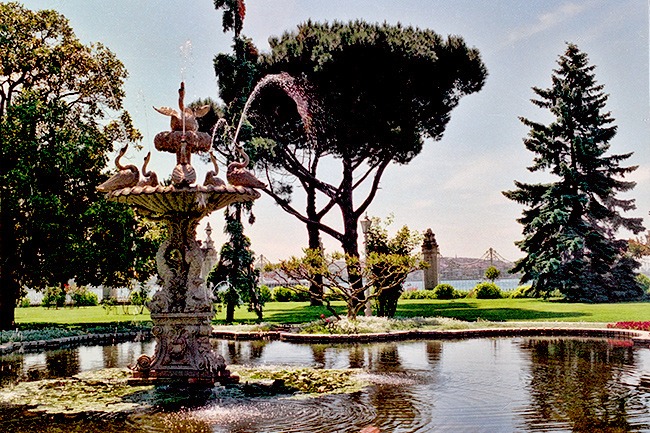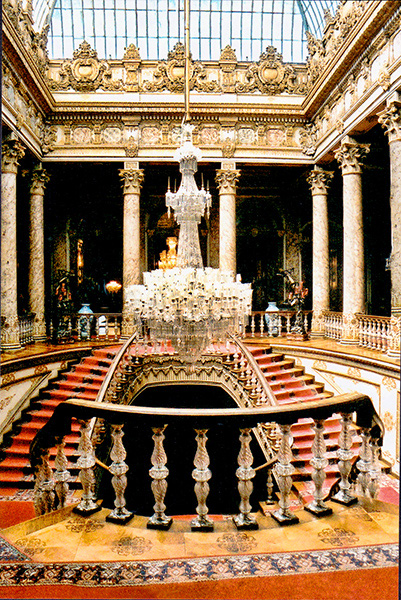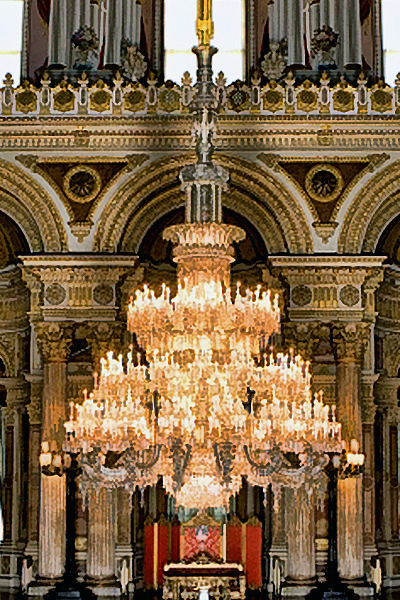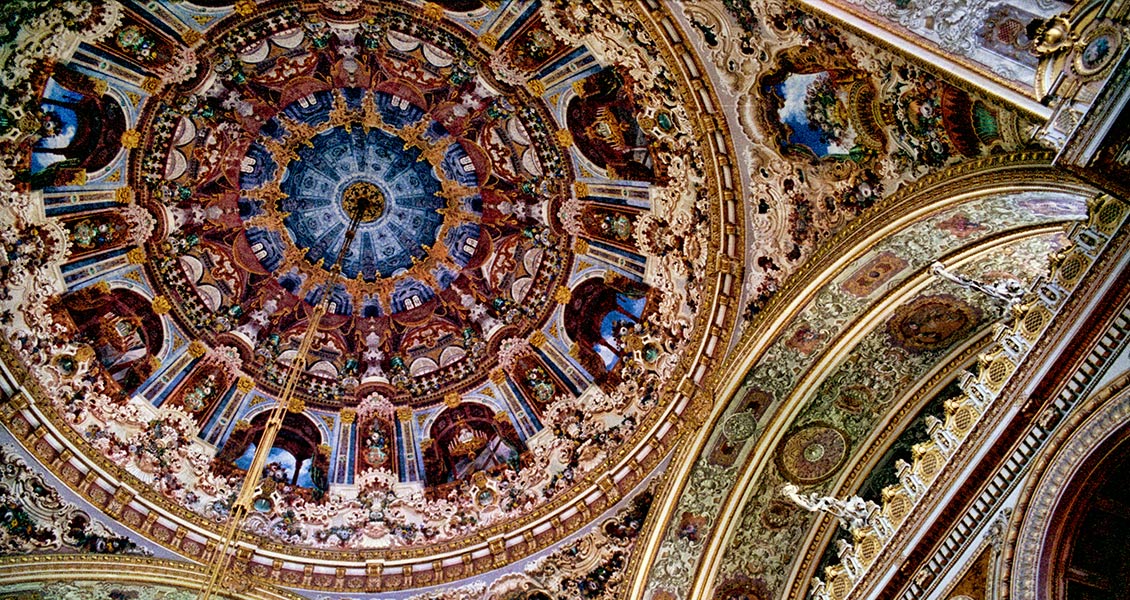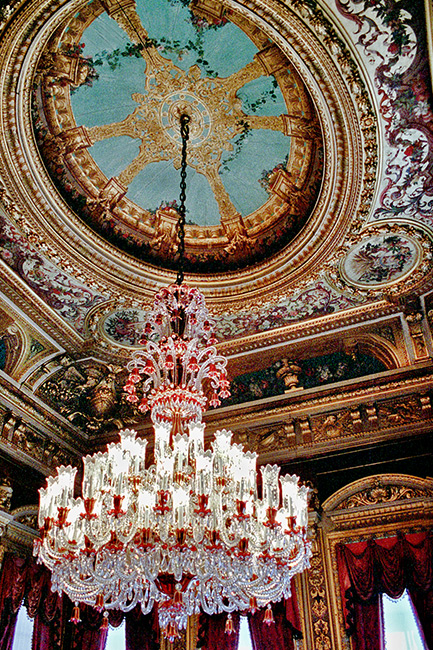|
The construction costs were five
million Ottoman gold Lira, or 35 tonnes of gold, in excess of $1 billion
in 2001. It has 285 rooms, 46 reception halls and galleries,
68 bathrooms and 6 Turkish Hamams. The w.c.'s and gas lighting
were imported from Britain, as the rest of Europe was still without
these modern amenities
Magnificent is the only way to describe
the main double horseshoe staircase. The balustrades are of French Baccarat
crystal. The banisters of mahogany and brass, the flooring is parquet
using 3 different woods. The carpets throughout were made especially
for the palace in Hereke not far from
Istanbul
In it's day the worlds largest
bohemian glass chandelier, having 750 lamps and weighing 4.5 tons,
hangs in the 2000 sq m Ceremonial Hall, so large it
took three days to heat for a function. It was made in
England and thought for
decades to have been a gift from Queen Victoria. A receipt was
found in 2006 showing the Sultan paid for it himself |





